Holy Mackerel: Discovery Of A Deep-Sea Pit Sparks Renewed Interest In Other Oceanic Anomalies
Many people have an unresolved fear of the sea. But who can blame them when there is so much to be afraid of, including squids, gigantic waves, and strange geological phenomena. You never know what’s lurking in the great blue depths of the sea, especially since 80% of it is still unexplored. You also may have heard of puzzling occurrences like the Bermuda Triangle, or alien-like crop circles below the water, but you may not know why or how they happen.
So, tag along with us while we show and explain some of the most bewildering enigmas of the sea. But don’t blame us if you’re suddenly too afraid to step foot in the ocean in fear of what you might encounter.
The Bermuda Triangle
We couldn’t resist starting with one of the most popular deep-sea mysteries. The Bermuda Triangle is infamous for the unexplained disappearances of about 50 ships and 20 airplanes. As the name implies, it’s situated in the middle of three points—Bermuda, Puerto Rico, and Miami.
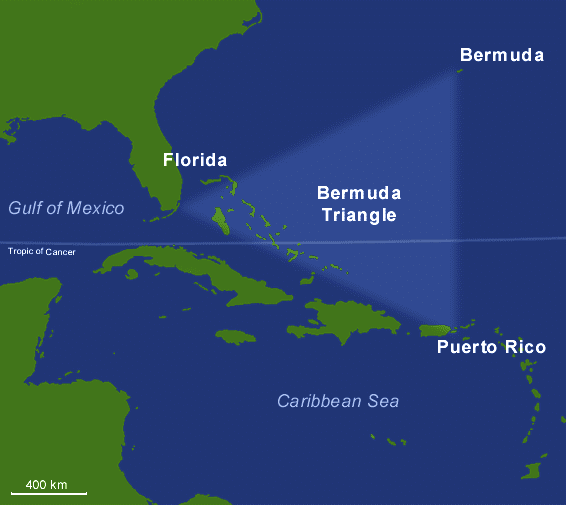
Although it is synonymous with vanishings, it actually doesn’t have more disappearances than any other area of the Atlantic Ocean. However, what can’t be explained is why there have been very few wreckages found within the region. So perhaps you should cancel your next cruise to Bermuda.
The Bloop
Although “The Bloop” sounds like the name of a cute and friendly fish, it’s the name given to an eerie underwater sound. It was discovered by researchers in the ’90s and has been described as having a high amplitude and ultra-low frequency.
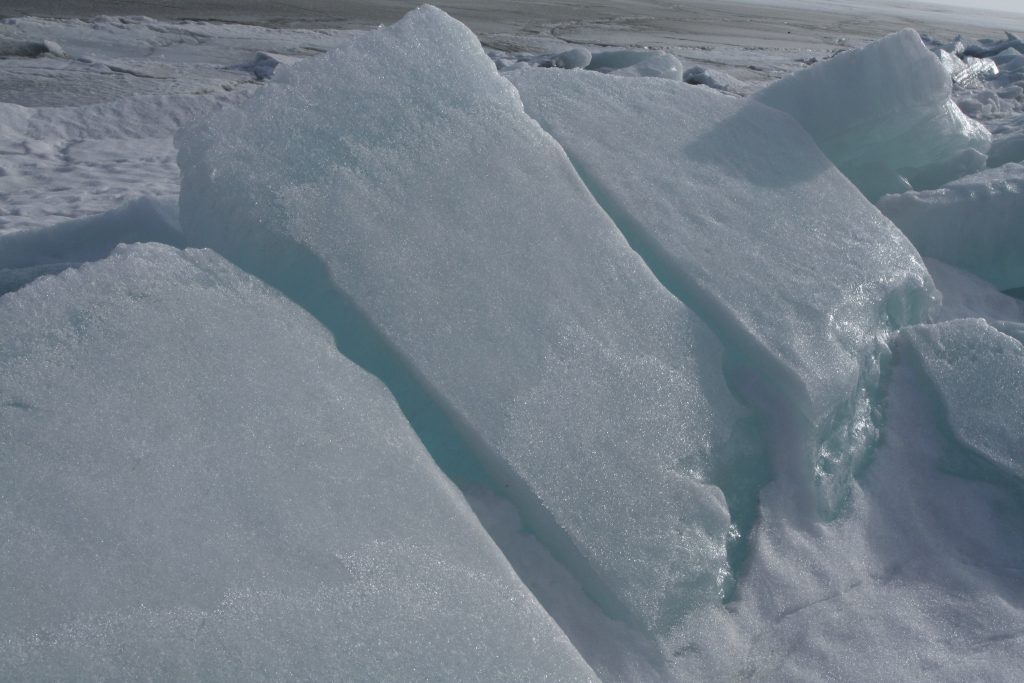
Some people have speculated the sound was caused by covert military operations, ship engines, and even an unknown sea creature. Luckily it seems to be none of the above and is instead the sound of icebergs breaking (otherwise known as an icequake).
Oarfish
Imagine peacefully walking along a beach and, suddenly, this scary-looking creature gets washed up on shore. We are sure anyone’s initial response would be screaming, disbelief, and possibly fleeing. This creepy creature is an oarfish, formally known as Regalecus glesne.
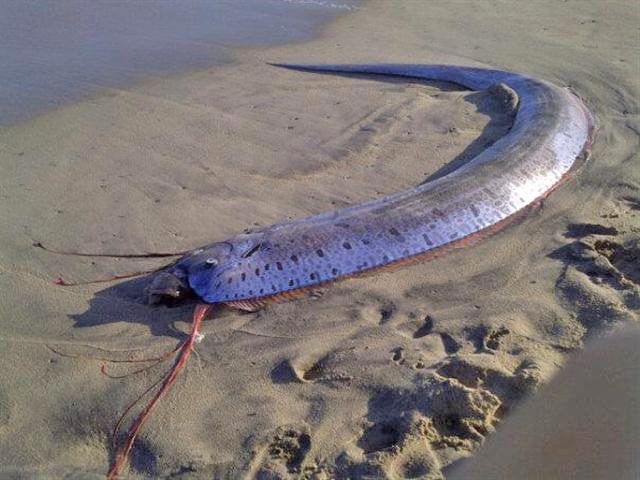
Oarfish are the longest bony fish on the planet. They’re rarely seen alive since they’re deep-sea creatures and only wash up on shores dead. In fact, it’s a mystery as to how they even wash ashore due to them living at around 3,000 feet deep.
The Mary Celeste
The Mary Celeste was a ship that was found drifting in the Atlantic Ocean by Canadian sailors. When it was discovered, there was not a soul aboard the ship, and the lifeboat was missing. Talk about a real-life horror movie.
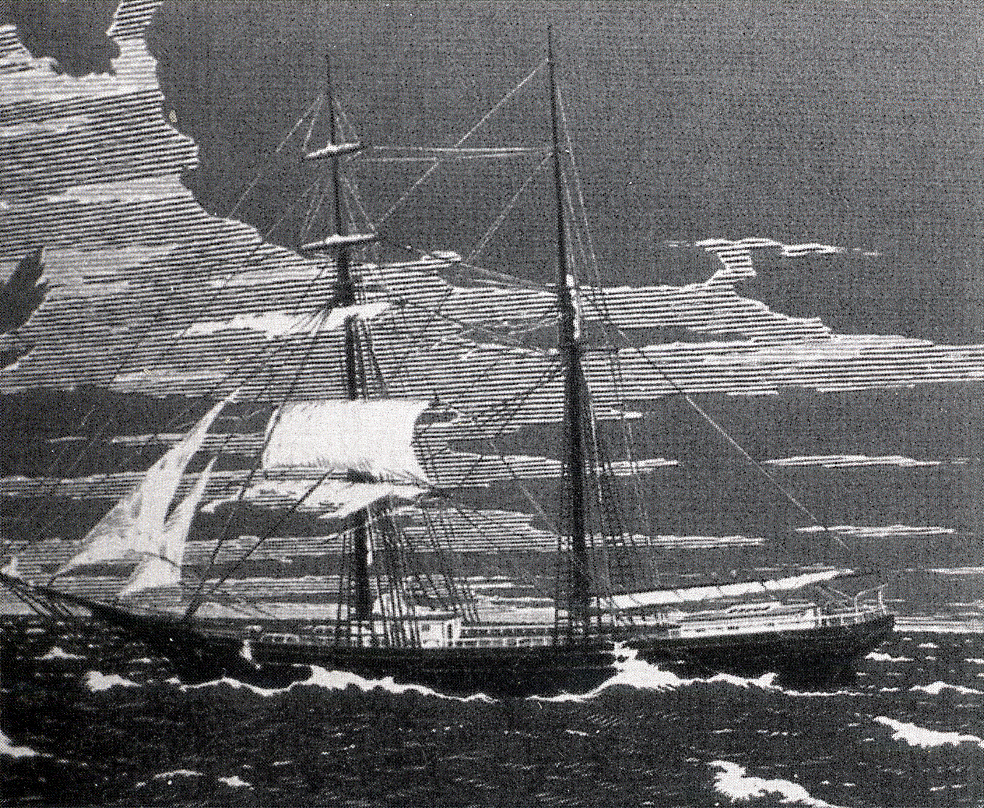
10 people were supposed to be on that ship; however, they were never found. The ship was disordered, but still fit for service at sea, so it’s a mystery as to why the ship was found deserted on its trip to Brazil.
Narwhals
It’s a shark! It’s a swordfish! No, it’s a…narwhal! Narwhals are deep-sea creatures that are known for their long tusks and have fittingly been nicknamed the unicorns of the sea. There has been much debate about the reason for their peculiar appendage.
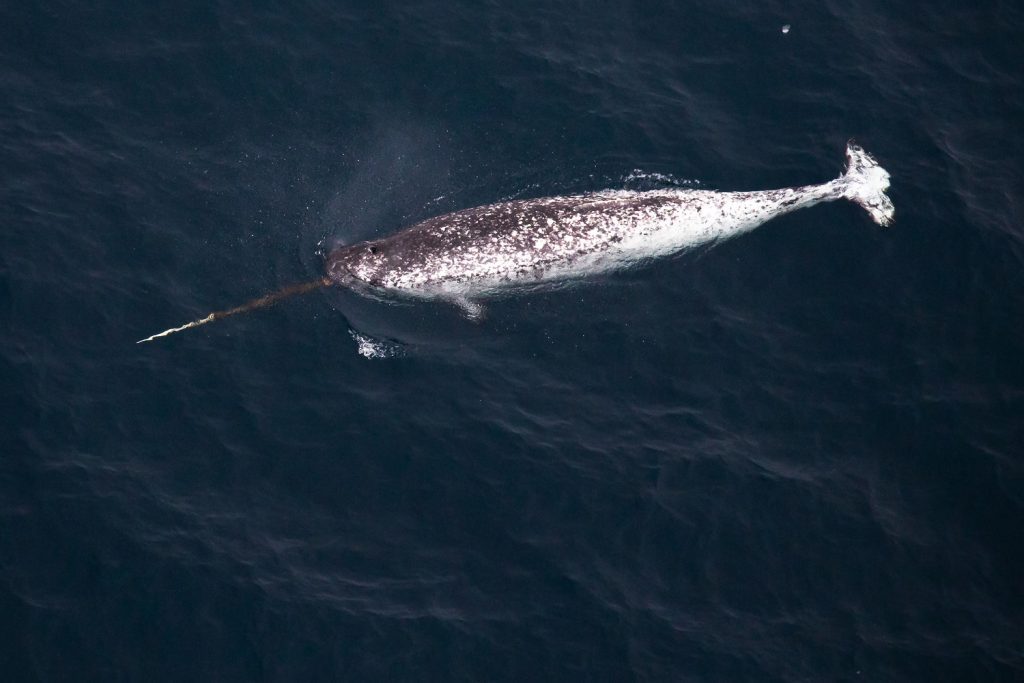
A narwhal’s tusk is merely a very long tooth with 10 million nerve endings. It is believed by many researchers to be used for sexual seduction. So, if you see a narwhal flashing its tusk at you, it may not be as cute as you think.
Japan Atlantis
If you ever wished the lost city of Atlantis was a real place, you’re in luck. The Yonaguni Monument is an underwater site that is more than 10,000 years old. This colossal structure is over 50 meters long and 20 meters wide.
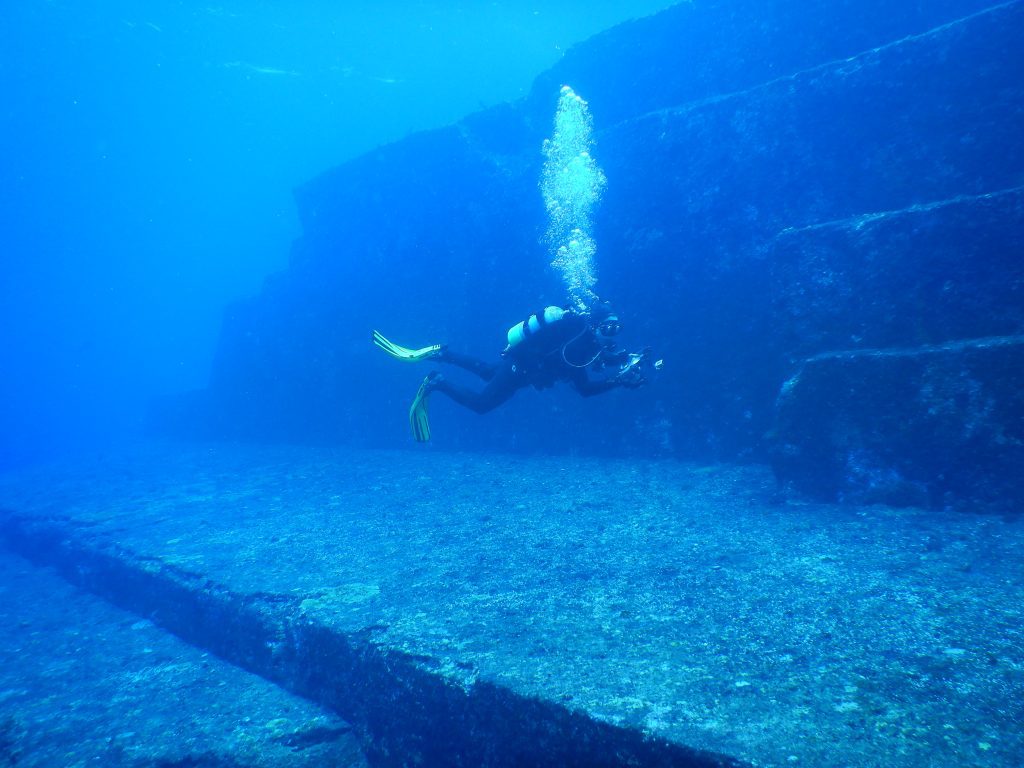
Many are unsure of the monument’s origin, but some have suggested it was an ancient city with reported carvings on the rocks. However, others say it was created naturally through underwater currents, and the carvings are just normally occurring scratches.
The Baltic Sea Anomaly
When a diving group went looking for treasure in the Baltic Sea in 2011, they found a 200-foot and iron-grey-looking object on sonar. It was believed to be a UFO since it looked like Star Wars’ Millennium Falcon or perhaps a lost city.
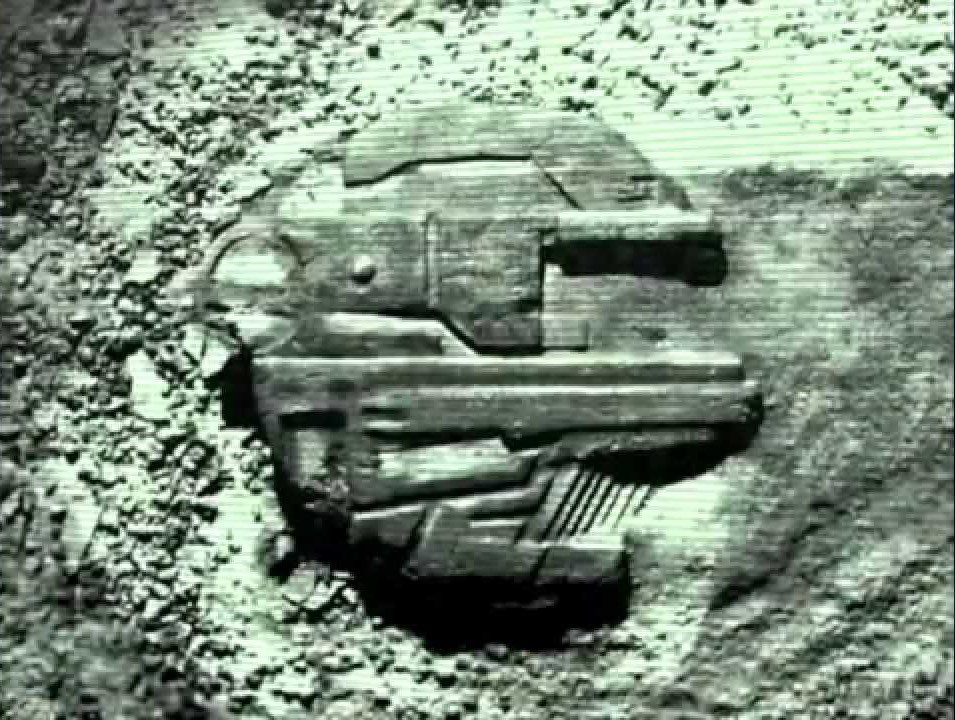
After much speculation, scientists discovered the large object was a substantial glacial deposit coming from thawing glaciers in the Baltic Sea Basin. Therefore, if you think you saw an alien aircraft underwater, it is safe to assume it’s a glacier.
Shark Eater
Several months after a 9-foot-long great white shark was tagged in 2003 for a study, the tag washed up on shore. Scientists found the tagged shark was eaten by something bigger after diving deeper into the ocean. So, the question is, what ate the shark?

When you hear of a great white being eaten, your first thought is probably, “is it that bad?” Though sharks aren’t as dangerous as the media make them out to be, we’re admittedly frightened by the thought of something bigger and badder than a great white.
The Kraken
Lurking in the seas of Norway is a massive monster called the Kraken (or so the legend says). Since the 1700s, sailors have feared they might encounter this beast because it is supposedly responsible for the sinking of ships and canoes.
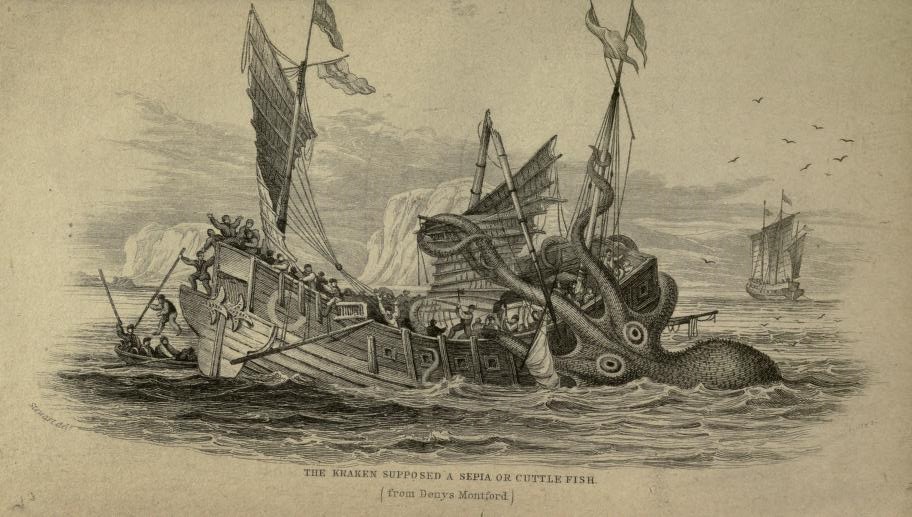
The Kraken has been described as a giant squid of about 50 feet. Sadly, a scientist has confirmed this creature may actually exist *gulp*. Although it is rare, squids can grow up to 90 feet, which is as long as a basketball court.
The Mariana Trench
The Mariana Trench is the deepest point in the ocean and is 36037 feet deep. It’s located near the Mariana Islands, which it is named after. At around 180 million years old, the trench is thought to be one of the world’s oldest seabeds.
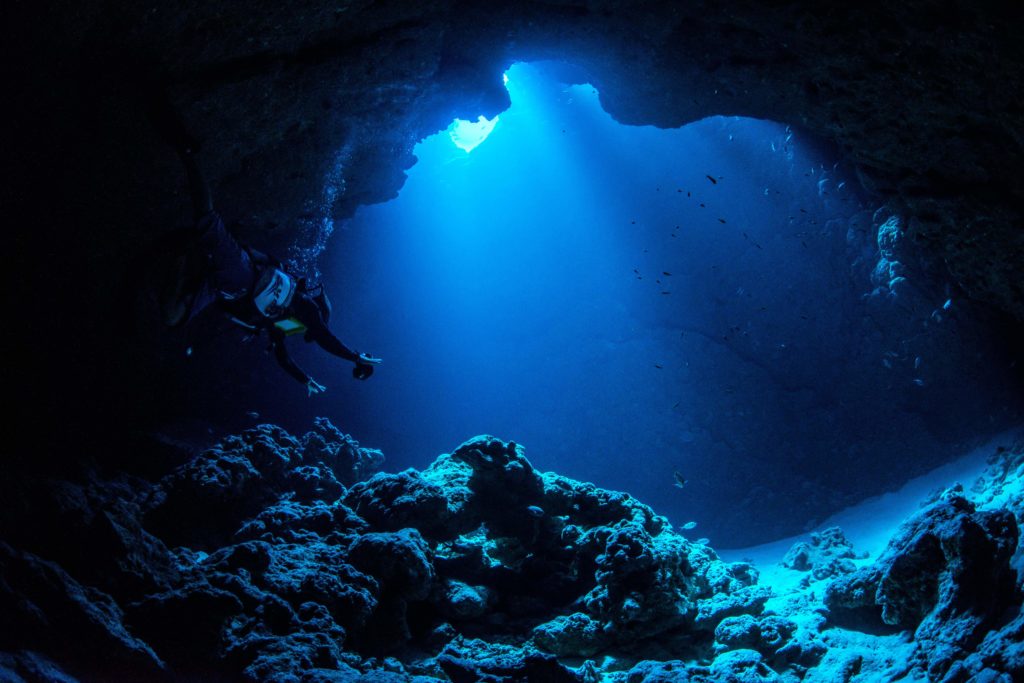
Don’t be fooled by its tropical name because it’s not a place you want to go on vacation. It’s so deep that only two people have managed to descend to the deepest point. This means that no one really knows what’s down there.
The Devil’s Sea
The Bermuda Triangle has some competition when it comes to being one of the most volatile regions in the seas. As if the name doesn’t give it away, the Devil’s Sea is to blame for the loss of a great deal of ships, airplanes, and submarines.

The Devil’s Sea can also be referred to as the Dragon’s Triangle. This name originated from the Chinese myth where undersea dragons were believed to attack ships. Scientists disagree with this fable and suggest currents are responsible for trapping passing ships.
Bermeja Island
The island of Bermeja was first mapped in the 1500s, and last appeared on maps in 1941. It was shown to exist off the coast of Mexico. However, researchers have found there is no evidence to suggest this island still exists.
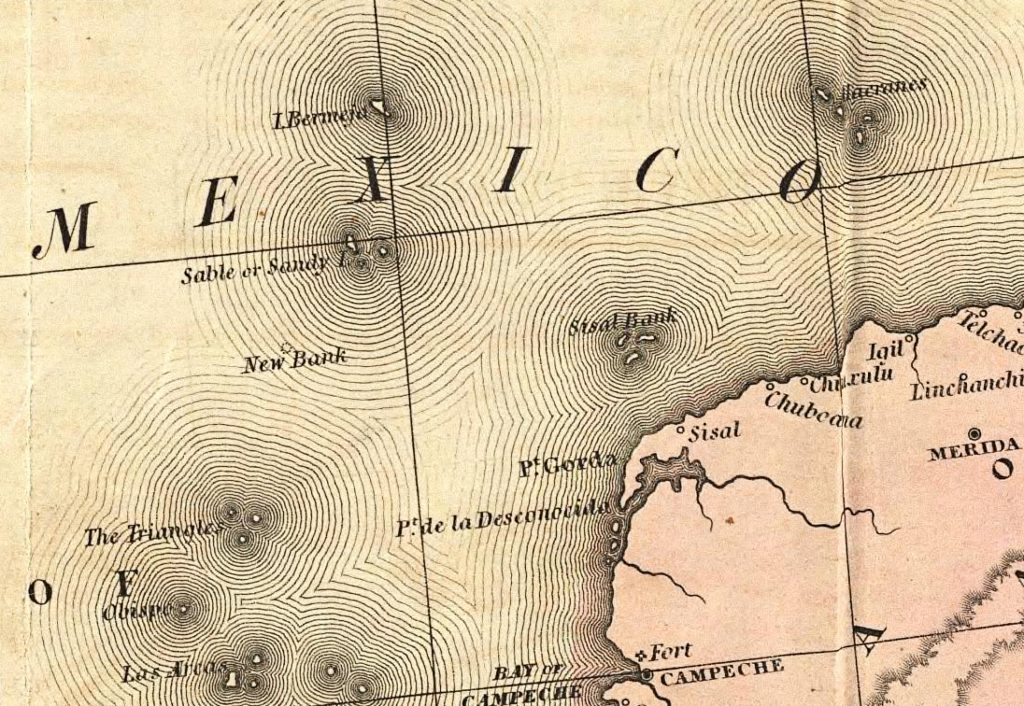
Of course, there are many plausible explanations for the disappearance of the island; some of them being a shifting ocean floor, rising seas, and imprecise mapping. With the vanishing island gone, we’ll never really know how it came to be…or where it went.
The Stronsay Beast
Those of you that grew up reading books and watching movies about the Loch Ness monster, like The Water Horse: Legend of the Deep, would be ecstatic to learn that old Nessie may have had a friend on the Island of Stronsay, Scotland.

Although the Loch Ness monster is believed to be a myth, the Stronsay Beast was, in fact, discovered lying on rocks. Alas, the beast was dead, but after examining its body, it was determined that it could be a sea monster.
Mexico’s Haunted Shipwreck
This cursed wreck, called the Mica wreck, is one of many on the ocean floor of the Gulf of Mexico. And by “many,” we mean that about 4000 shipwrecks can be found across the water. However, there may be more to the Mica wreck than we can uncover.
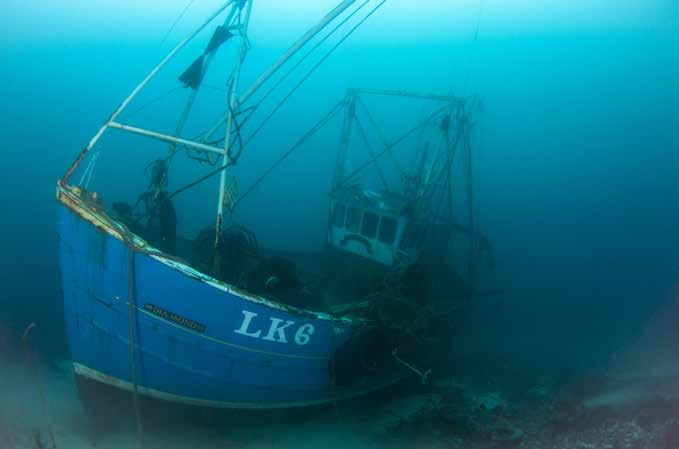
The wreck was discovered when Exxon-Mobile was laying a pipeline in 2001. A team was sent to explore the wreckage, but all attempts failed for one reason or another. It could be bad luck, or maybe, angry ghosts who don’t want intruders.
The Terrible Claw Lobster
Ausubel’s mighty claw lobster is one of a kind. It lives up to its name with its lengthy, toothy claw. Our lovely friend over here was only discovered in 2010, and scientists are even now attempting to understand the purpose of its long claws.
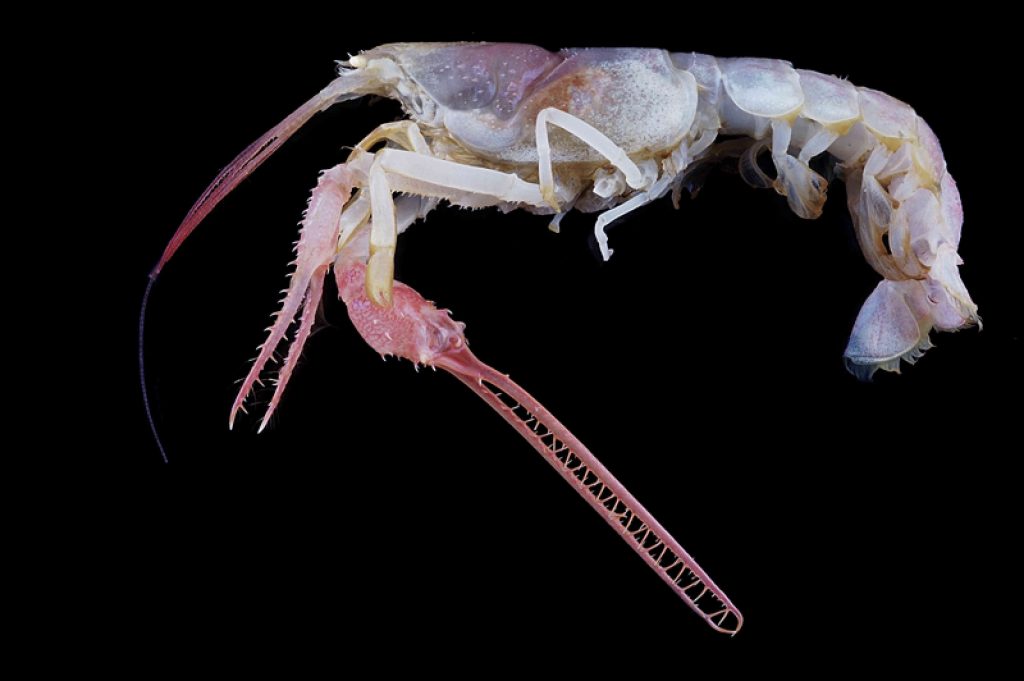
When it comes to the terrible claw lobster, you don’t have to worry about it pinching your toes when walking along a beach. It lives nearly a thousand feet deep in the ocean, which is likely the reason it was discovered so late.
Great Blue Hole
One of the most satisfying natural wonders of the world is the Great Blue Hole on the coast of Belize. This beautiful and astonishing creation was formed due to an underwater sinkhole, leaving a perfectly round circle amongst the Lighthouse Reef.
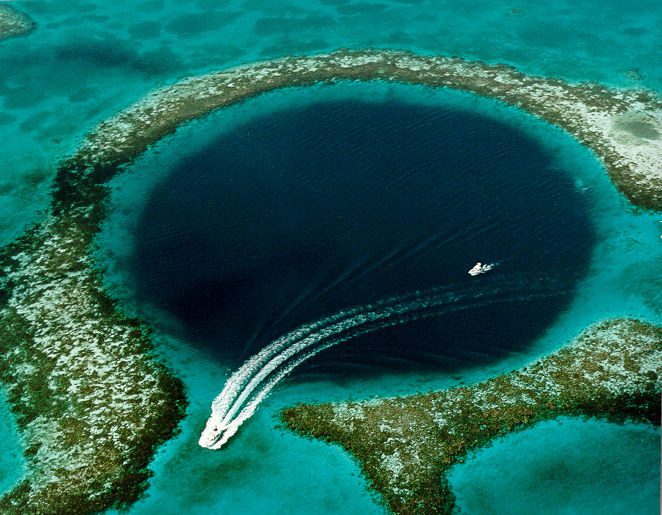
Many have ventured into the hole, but only a few were brave enough to dive deeper than the surface. But those who did discovered something shocking—the remains of three people who had gotten lost inside the blue hole. We definitely won’t be swimming in there.
Milky Sea Mystery
If you’ve ever been lucky enough to spot the milky sea in person, you’d know that it’s one of the most mesmerizing phenomena of the sea. Before science was as advanced as it is today, no one could explain it or verify if it was real.
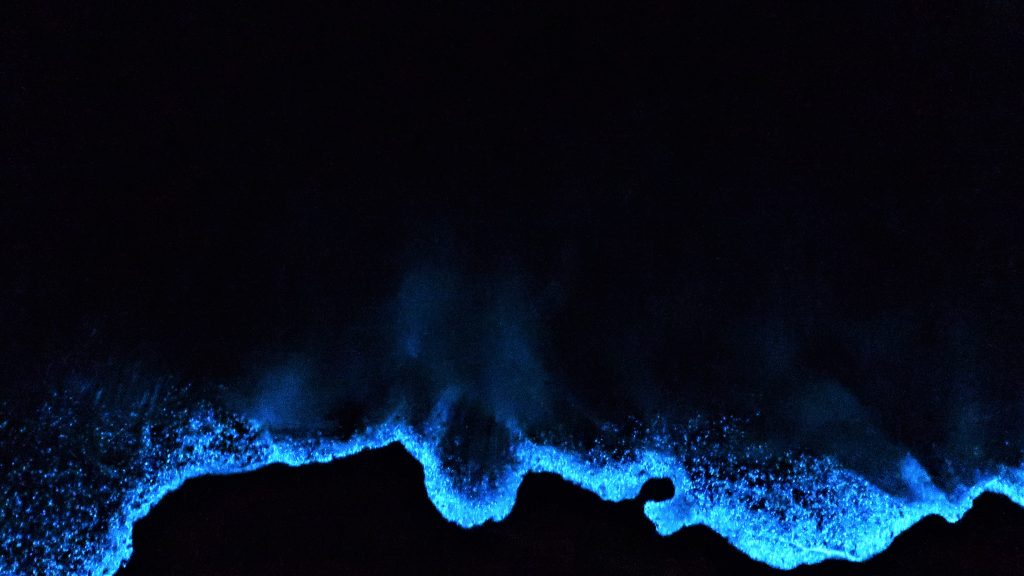
We now know that the milky sea is likely attributable to bioluminescent bacteria. Surprisingly, the bacteria want to be eaten and glow in order to attract fish. It’s slightly strange, but we think the majestic view makes up for it.
Undersea Crop Circles
You’ve probably heard of aliens creating crop circles on isolated farms, but we bet you haven’t heard about underwater crop circles. These circles were first found in 1995 on the ocean floor near Southern Japan, and everyone believed aliens to be the culprit.

Unfortunately, these markings were not signs of alien life, but rather a male pufferfish’s attempt at attracting a mate. Impressively they dig with their fins and even decorate the circles with coral fragments and shells. Pretty romantic, don’t you think?
Blue Whales
Not many people would think blue whales are perplexing animals. We all know they exist and have been sighted regularly. However, not much is actually known about them. These friendly giants are sadly endangered, which makes it difficult for researchers to find enough of them to study.
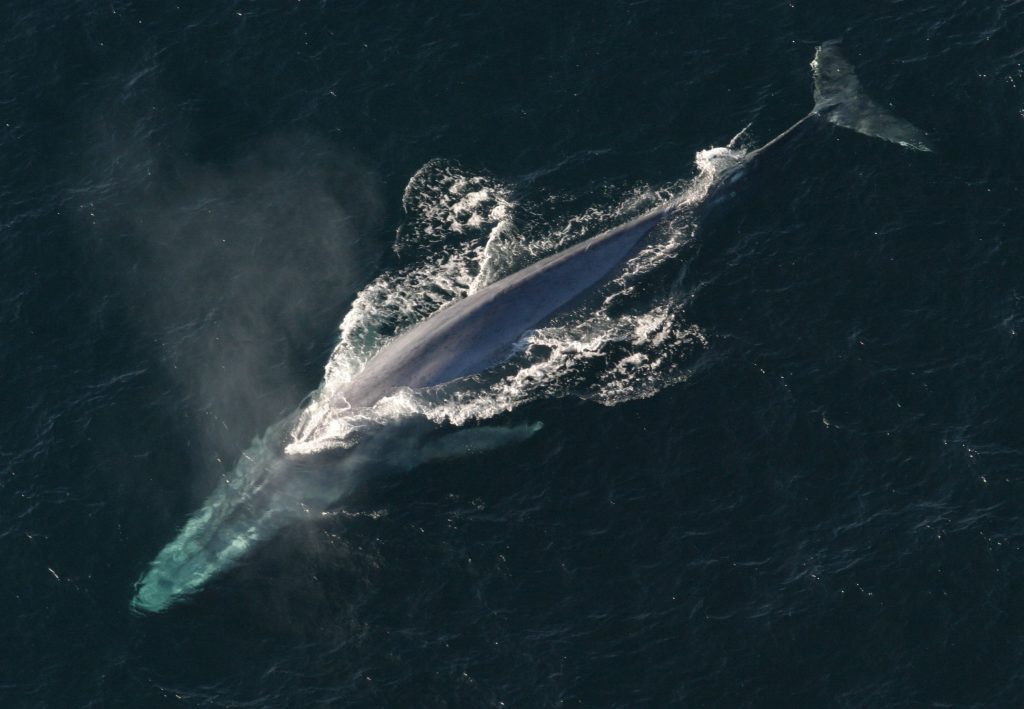
There are also several things we don’t know about the largest animal on the planet, including their life span, the specifics of how they reproduce, and when they become sexually mature. We don’t even really know why blue whales sing.
The Daedalus Serpent
Want to know a terrifying fact? All snakes can swim. But you shouldn’t be afraid of just any snake swimming towards you. You need to watch out for the HMS Daedalus’ enormous sea serpent, which is essentially a 100-foot-long snake.
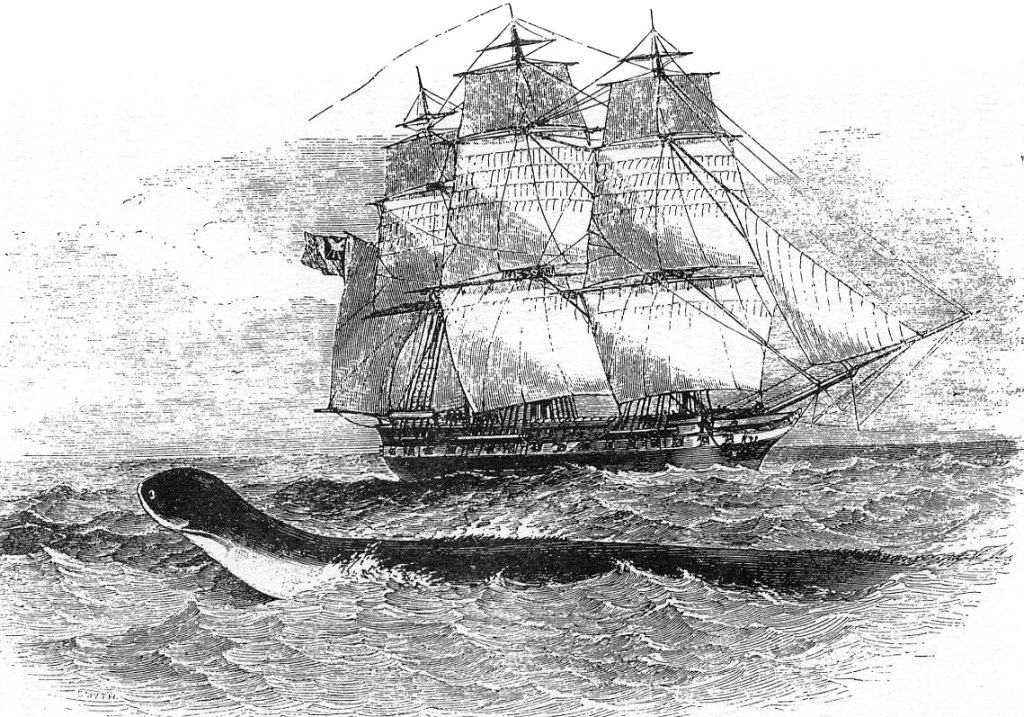
This giant serpent was first spotted in 1948 by a British naval warship called the HMS Daedalus (hence the creature’s name). Some say the supposed serpent was simply a whale, but we don’t know any whales that resemble monstrous snakes.
Immortal Jellyfish
Have you ever wanted to live forever? What about potentially curing life-threatening diseases like cancer? Well, immortal jellyfish may be the answer. These fascinating animals possess the ability to regress to a polyp stage when feeling threatened and can therefore cheat death.
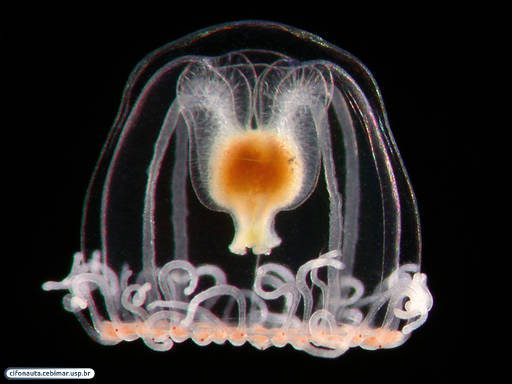
Although oceanographers have known about this jellyfish’s existence for at least a century, they only recently discovered its Benjamin-Button mastery. However, scientists are still unsure how they can revert and regrow. If you’re capable of finding out, you may just be the person who cures cancer.
The Purple Orb
There are many discoveries that lead scientists to be slightly perplexed, but not many have left scientists completely stumped. In 2016, a glowing purple orb was discovered off the coast of California, and scientists couldn’t even begin to guess what it was.
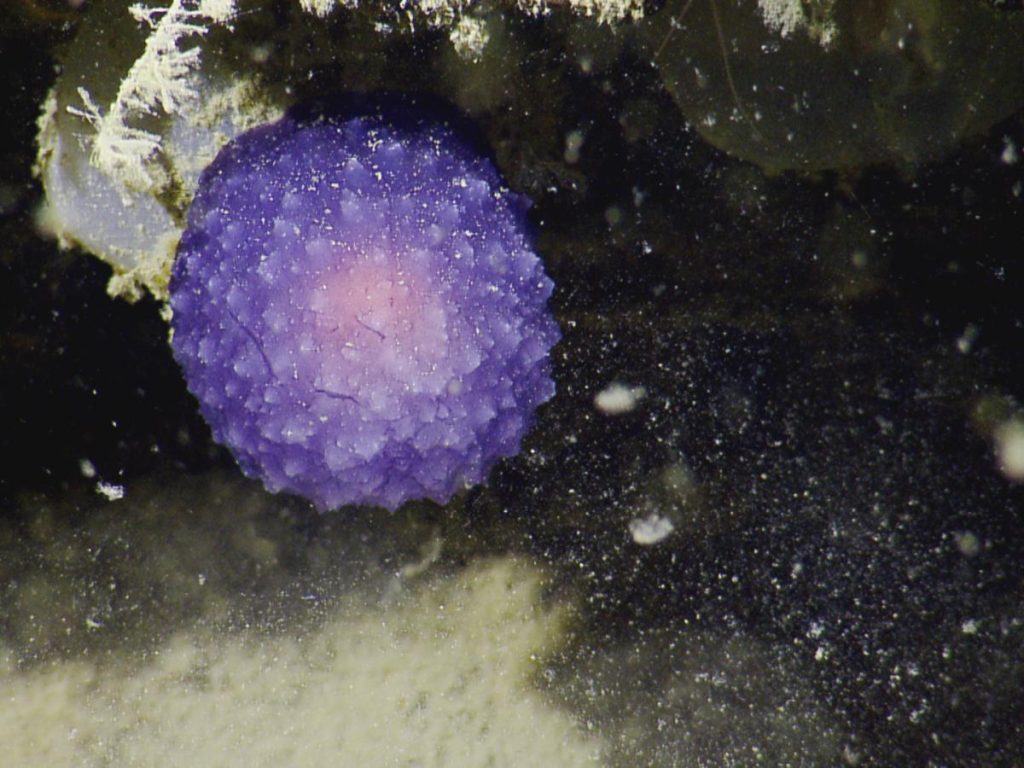
At first, researchers thought it might be a spider egg sack. But arachnophobes can thank their lucky stars that it may only be a new species of sea slugs. We think we can all agree we’d rather have new snails swimming around than eight-legged foes.
The Jacuzzi of Despair
When you think of a jacuzzi, you probably think of a relaxing experience with warm water and jets for ultimate comfort. Unfortunately, this jacuzzi isn’t a pleasurable experience at all and will leave anything that enters it as pickled as a … well … pickle.
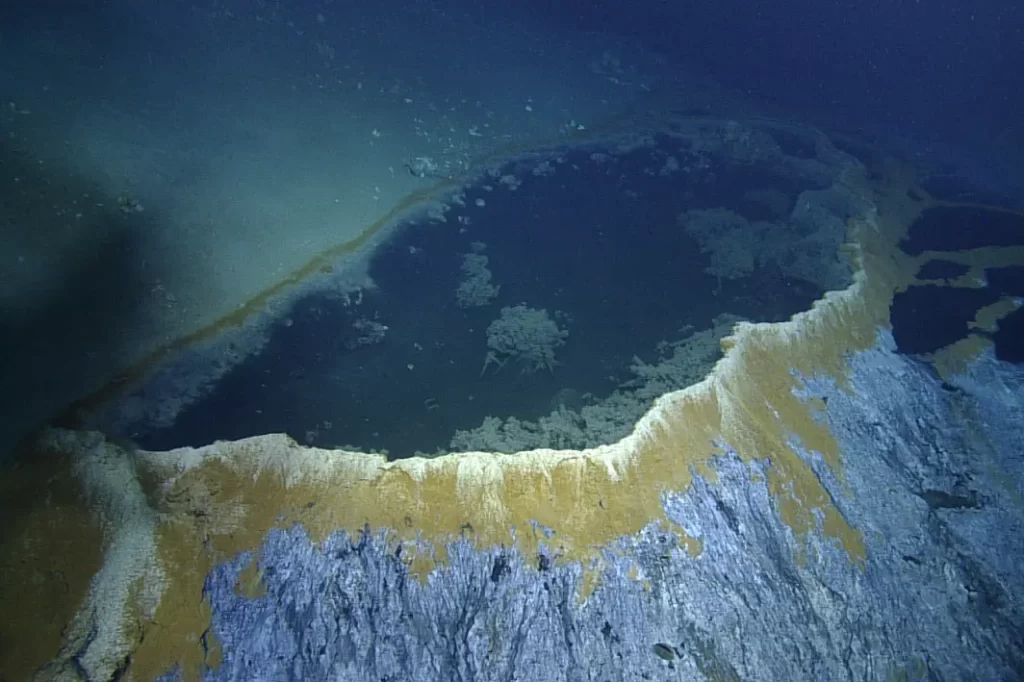
This death trap of an underwater lake is located on the Gulf of Mexico and is toxic due to increased levels of hydrogen sulfide and methane. It’s called a brine pool and is hotter and saltier than the surrounding water.
Macropinna Fish
Ever wish you could see inside someone’s head? Well, look no further than the barreleye (Macropinna fish). Its transparent head allows you to see its nerves, brain, and green eyes. But beware of getting too close to this deep-sea creature because you might injure its fragile head.
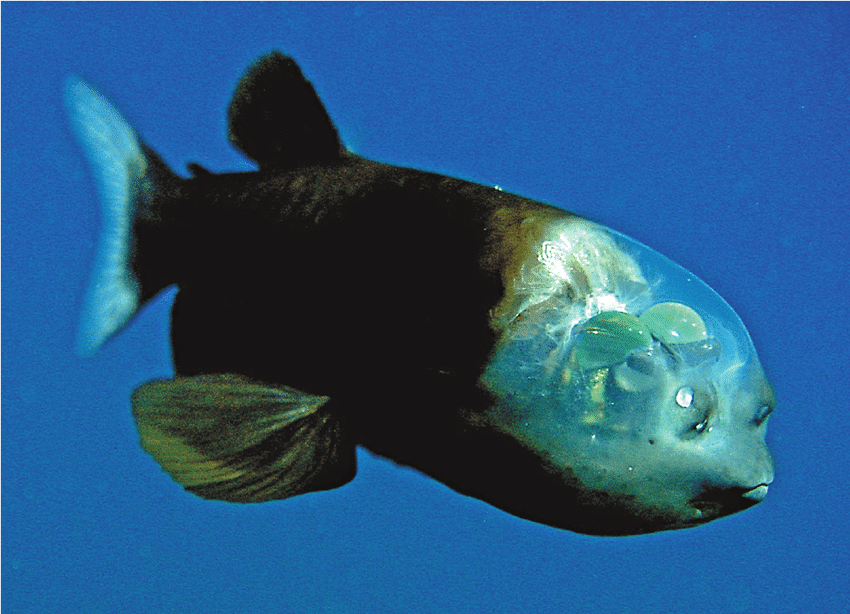
You may have thought their bizarre eyes would give them superpowers and let them see hidden colors, but they’re actually colorblind as they lack clone cells used to perceive color. Don’t fret too much because these delicate creatures only need to differentiate between light and dark.
Bigfin Squid
Bigfin squid are not the type of animals that like to be photographed, which is why very few have captured a picture of one. Just as well—we’d prefer not to be hounded with photographs of their ominous and lengthy tentacles.
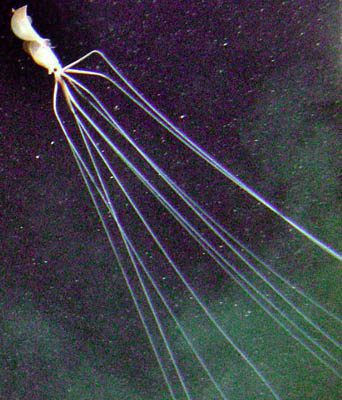
It’s no surprise that these creatures dwell in depths of up to 4735 meters. If you think that depth is impressive, wait till you hear about the size of them. The largest of its kind ever recorded was about 21 feet long—yowzah!
Double Whirlpools
Tornadoes are one of the most dangerous natural disasters as they can throw a person thousands of feet. Marine life is most likely safe from tornadoes, but they have their own natural terrors. They can’t escape double whirlpools, measuring 60 miles across, hurling toward them.

As you can probably tell, a double whirlpool is significantly worse than a normal one because they can carry around heat, organisms, and chemicals. They behave so weirdly, that scientists are still trying to figure out how they came about.
Angler Fish
We think it’s safe to say angler fish are the ugliest critters we’ve come across. They have terrifyingly sharp teeth, ugly faces, and glowing extremities hanging from its head. They’re also probably one of the most well-known deep-sea fish due to their many film appearances. Remember the one in Finding Nemo?

We know you’re wondering why they have a light dangling in front of their face. Intriguingly, it’s used to attract prey directly to their mouths. But only the females are blessed with the hanging appendage this time which means the men rely on the women—girl power!
Twilight Zone
Rod Sterling’s famous series makes us really look deep within ourselves and sometimes even question the society we live in. Though the mesopelagic zone doesn’t have any animated mannequins or pig-faced humans, there might just be aliens hiding down there.
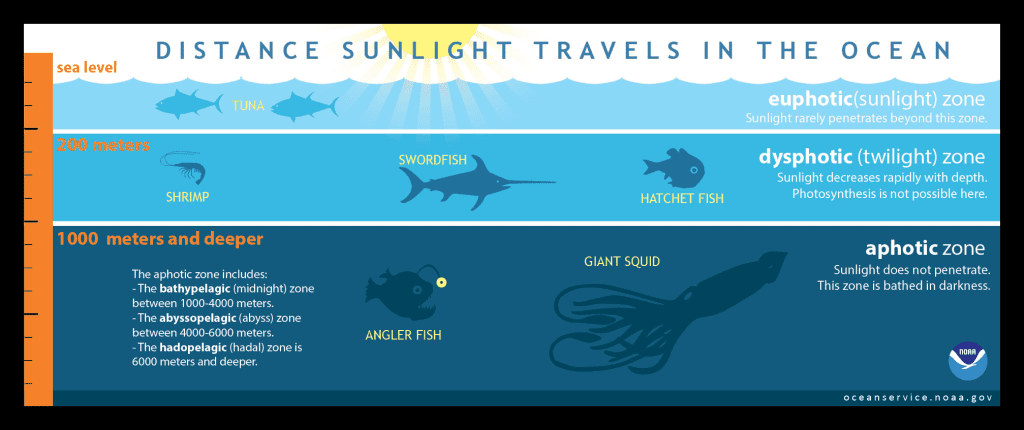
This region isn’t limited to one spot on earth. Once you get 200 meters below the ocean’s surface, light quickly fades. The sun can’t penetrate below 1,000 meters, leaving the so-called “twilight zone” just shallow enough to see the light, but too deep for even photosynthesis to occur.
Vampire Squid
If there’s one thing we’ve learned, it’s that squids are very strange undersea creatures. You’ve heard about humungous ones, long-tentacled ones, and now you’re going to learn about vampire squid. They don’t suck blood, but they do have a few tricks up their sleeves.
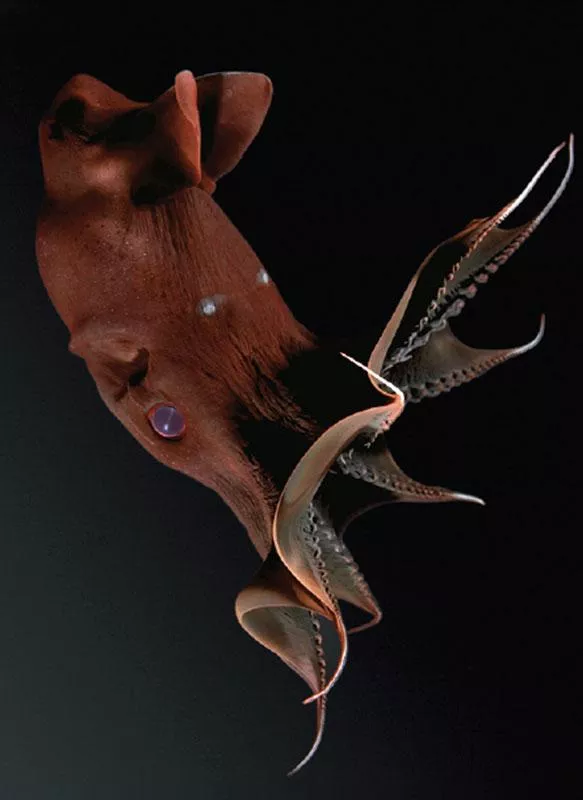
Unlike some other species of squid, the vampire squid doesn’t squirt ink or change color to evade predators. Instead, they produce sticky, bioluminescent mucus that stays glowing for close to 10 minutes. That’s plenty of time for them to escape unwanted company.
Upsweep
The Bloop is one of many sounds that can be heard in the ocean. Upsweep is another oceanic noise, but unlike the Bloop, it can’t be explained. This mystery has existed since at least 1991, and we’re still seeking answers.

Although it’s difficult to determine the specific location of the source, it is somewhere in the Pacific in the middle of South America and Australia. Additionally, researchers know it is the loudest in Autumn and Spring (for some undetermined reason).
Frilled Shark
You don’t want to get on the frilled shark’s bad side. It’s basically the hybrid of a shark and a snake with 300 backward-facing trident-shaped, sharp teeth. Its snaky elongated body can reach lengths of up to 7 horrific feet.
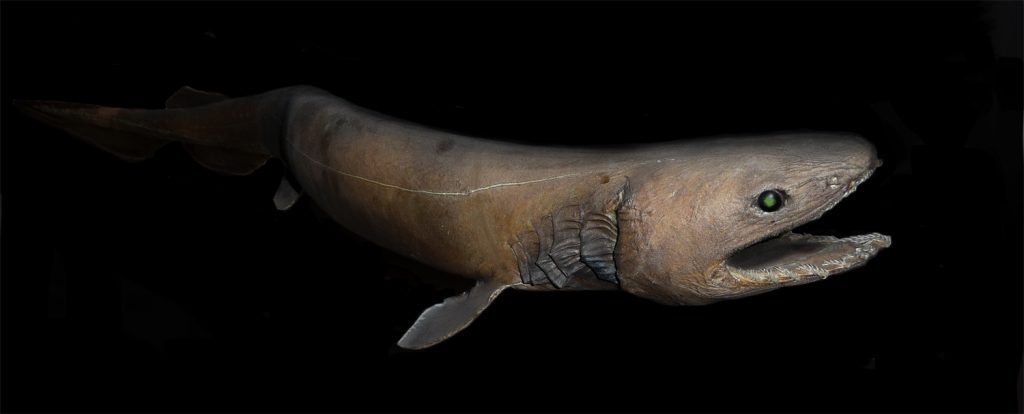
As if the frilled shark couldn’t get any more frightening, it hovers in the water and possibly attacks its prey by launching at it like a snake. But in spite of the fact that it’s found all over the world, you may never see it in person. Phew!
Alaskan Whale Deaths
2019 was not a good year for gray whales. More than 170 whales were found dead along the Pacific coast, and seven of these deaths were in Alaska alone. Plus, scientists don’t really know why a significant number of this marine population died-off.
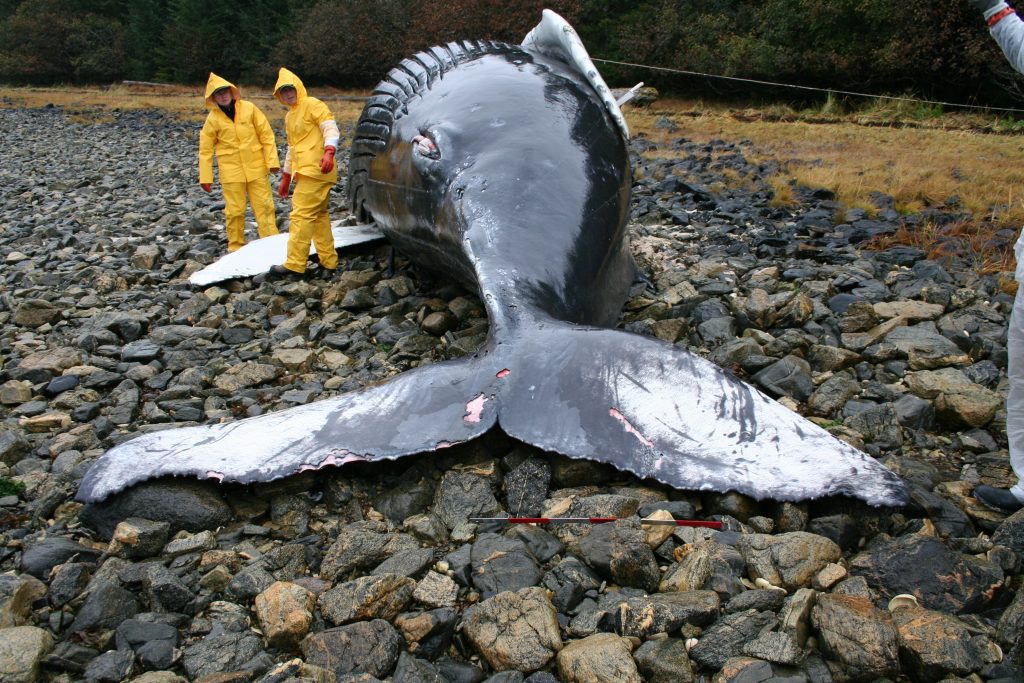
This isn’t the first time gray whales have experienced a mortality event which is why they were on the verge of extinction until 1994. Hopefully, we won’t be finding any more beached whales in 2023 for any kind of reason.
Giant Leptocephalus
No one really likes eels. It may be a popular Japanese dish, but we’re sure no one would want to be trapped with one in the ocean. The Leptocephalus giganteus is possibly worse than the electric eels you’ve heard of. We didn’t think that was even possible!
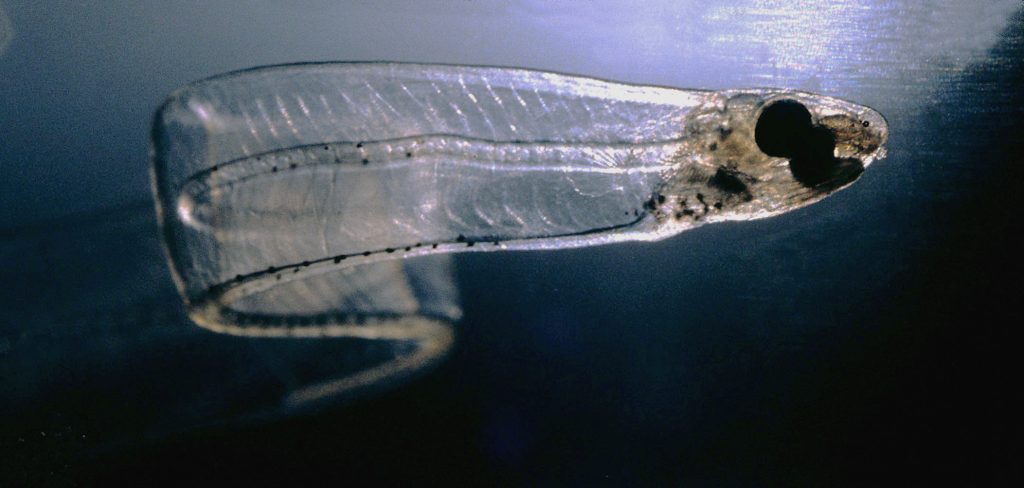
Only two Leptocephalus giganteus eels have been studied as babies. This means we barely know a thing about them—including how big they can grow. The giant leptocephalus could be the sneaky culprit in many sea serpent myths and stories. Perhaps we finally found the world serpent, Jörmungandr.
Underwater Waterfall
Is water wet, or does it cause the state of being wet? The answer may lie in underwater waterfalls. Beneath the Denmark Strait lies the largest waterfall on Earth. There, an estimated 123 cubic feet of water fall every second, flowing down the 11,500-foot cataract.

Sadly, there aren’t any pictures of this “underwater waterfall,” which is 3.5 times larger than the tallest terrestrial waterfall. The picture attributed to it is actually in Mauritius and is merely an optical illusion. The island nation’s attraction is merely the result of silt and sand falling into a pit.
The Lost Submarines of 1968
The Cold War was an awful time for American and Soviet Union citizens. The threat of nuclear war is enough to make anyone squirm but imagine adding the mysterious disappearances of four submarines to the equation. No wonder everyone was on edge.

The USS Scorpion, K-129, INS Dakar, and Minerve all went missing within the first few months of 1968. Many of the disappearances have been attributed to explosions yet the likelihood of that happening to four submarines in the same year is quite low.
Transparent Octopi
What are they feeding octopi down in the deep blue? There must be something in the water to create these bonkers creatures. The evasive glass octopus is one of few completely transparent deep-sea animals and is so rare that you may never get to see one.
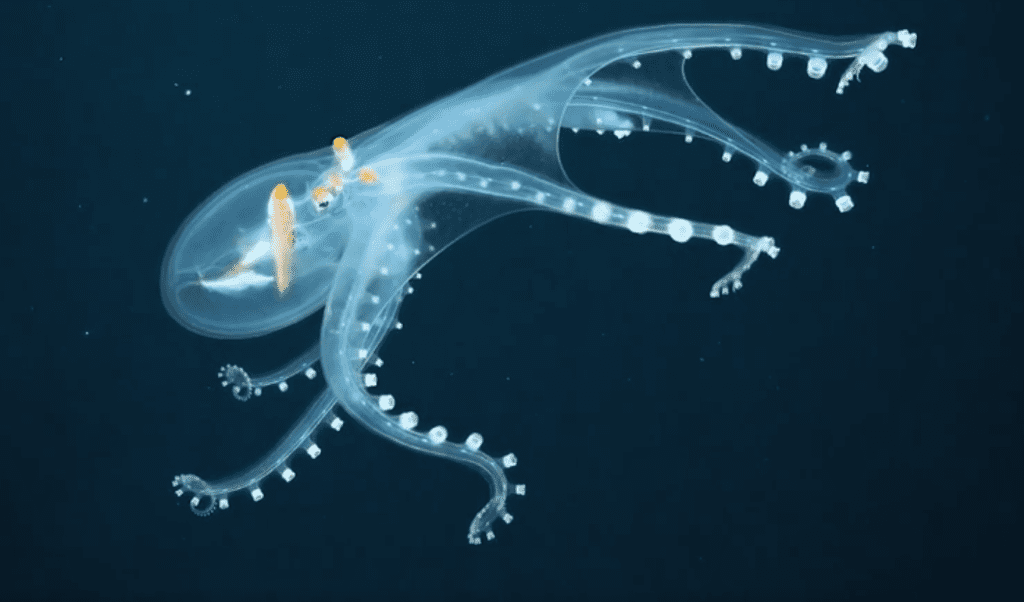
The only parts of the glass octopus that you are able to see are its digestive tract, eyes, and optic nerve, which likely won’t look too tasty to predators. We’re super jealous. If only we could turn invisible when there is undesirable company.
SpongeBob and Patrick
We are very happy to be the ones to tell you this: SpongeBob SquarePants and Patrick Star are real. In August 2021, an image of a square-shaped yellow sponge and a pink starfish side by side was released by the NOAA.

It turns out that if you want to take a swim in Bikini Bottom, you only have to dive 6184 feet off the coast of New England. Let’s be honest, no depth is too deep to catch a glimpse into the world of SpongeBob SquarePants.
Shape-shifting Whalefish
Whalefish had scientists fooled for years. Researchers had observed the fish in three different stages of their life and originally thought they were different species due to the drastic changes in appearance. Because of this, scientists know very little about the shape-shifting fish.

These deep-sea fish are so mysterious that we don’t know how many there are in the world, who they live with, how long they live, and how they reproduce. Fingers crossed that, in a few years, researchers will be able to shed some light on these bizarre creatures.
Adam’s Bridge
Adam’s Bridge, also known as Rama’s Bridge, is located between Sri Lanka and India. This chain of shoals is a dream for anyone who wouldn’t mind walking 30 miles across the sea in 1-meter-deep water to reach one of the adjoining countries.

Even though many enjoy the spectacular sight, it’s more of a nightmare to anyone with a vessel. So much so that in the 19th century, an excavation operation was attempted. Luckily, it failed, and we’re still able to treasure this incredible creation.
Blood-red Jellyfish
Blood-red jellyfish, or Poralia rufescens, is a newly discovered species of jellyfish. It was sighted on the 28th of July 2021 and went unnamed for a while. Researchers came to know it as the blood-red jellyfish, named so for its vibrant red coloring.
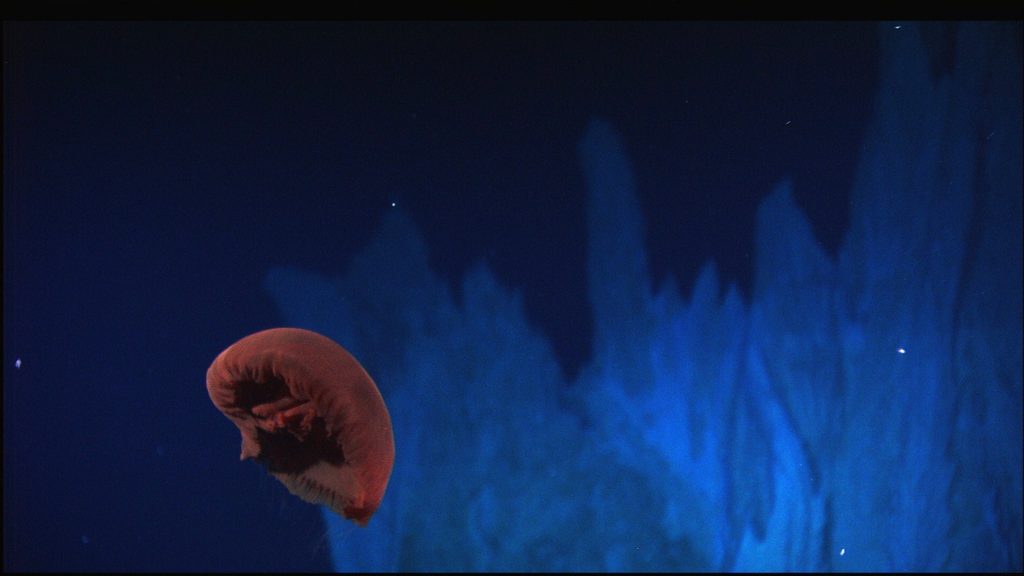
Just like many other creatures on this list, it is considered to be rare due to the lack of sightings. It’s pretty hard to miss since it’s such a striking color. Perhaps we’ll be gifted with more visits from the jelly in Rhode Island waters in the future.
The Green Flash
While the Green Flash is technically not a deep-sea mystery, it’s still a famous oceanic phenomenon that has fueled fallacies for years. You can catch a glimpse of a green ray at the tip of the rising or sinking sun.

We know all the science geeks out there are dying for an explanation, and thankfully, we have one. Sunlight refracts into the green color as a result of light moving through the earth’s atmosphere. We may not understand fully, but we’ll continue oohing and aahing at this fleeting spectacle.
Sea Pig
We know this creature doesn’t look like much, and it clearly doesn’t resemble a pig. But we promise you it is named sea pig for a reason. It spends its day shoveling through mud on the seafloor, much like a pig rolling around in dirt.

These little guys might look cute, but when given the chance, they will feast on any carcass that sinks to the sea floor. In fact, if a whale sinks to the ocean floor, herds of sea pigs will congregate to feed on the corpse. Gross right?
